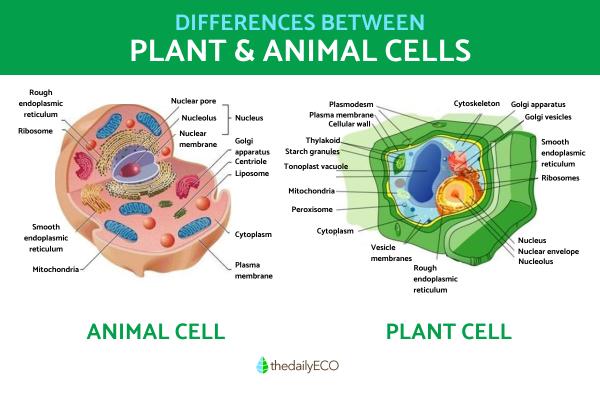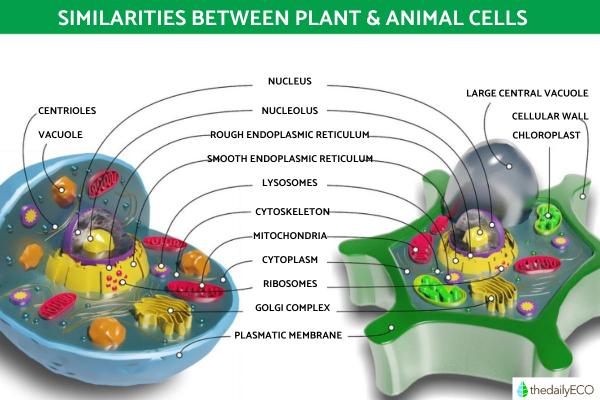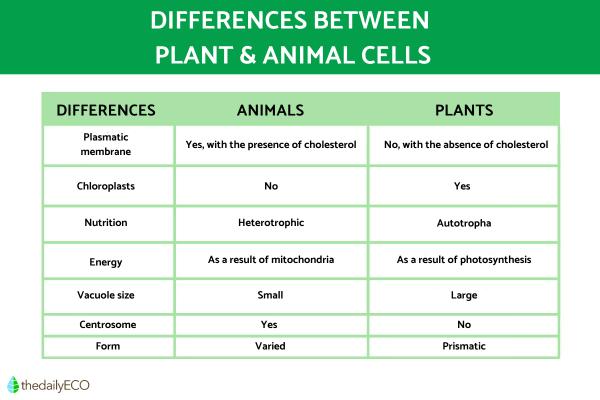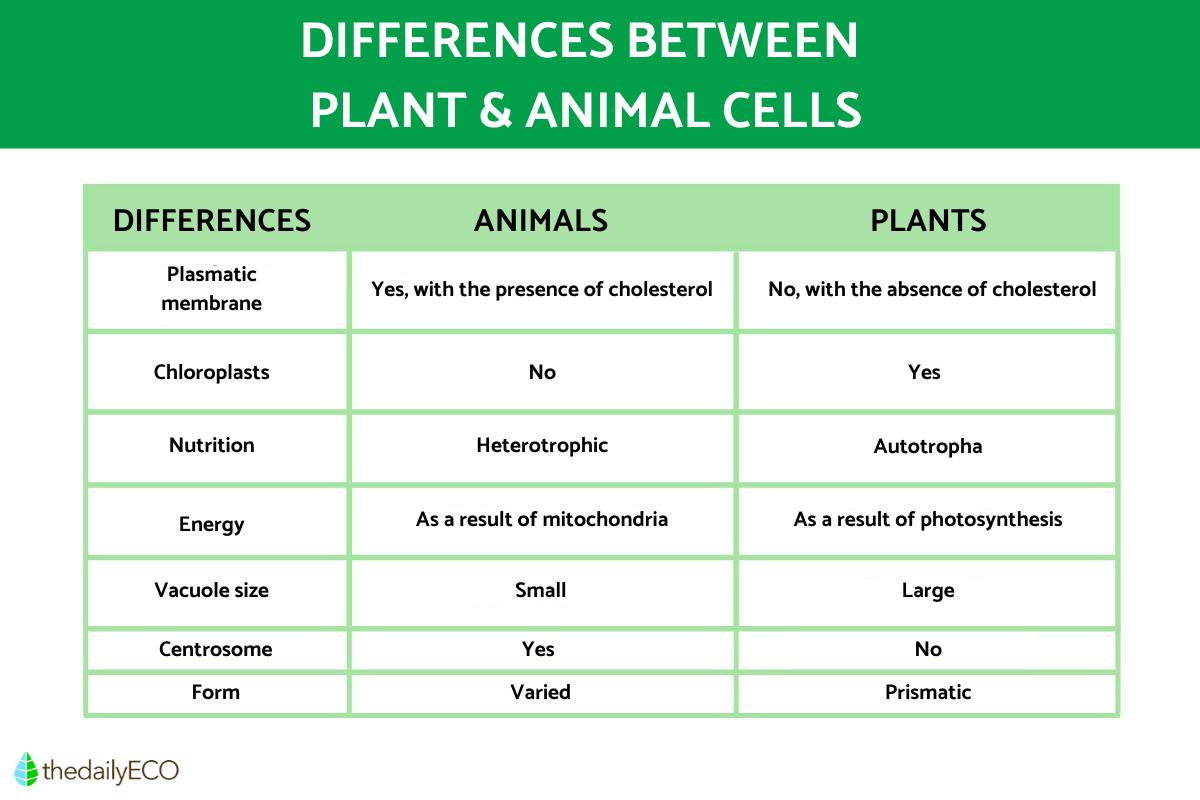The Differences Between Animal and Plant Cells


Also known as cytology, cell biology is a field of science which helps us to understand how living beings work. Different techniques have been developed to help facilitate our understanding, providing us great insight into how different cells work to fulfill their functions. We don't use this knowledge simply to know what they are, we use it for many practical purposes. This includes the fields of agriculture, disease, biology and many more. A lot of this practical knowledge comes from comparisons between different cells. One of the greatest comparisons is animal cells vs. plant cells.
At thedailyECO, we look at the differences between animal and plant cells. We find out their component parts and what are the fundamental differences between these cells which make up living organisms. You can learn more with our definitions and diagrams of plant and animal cells.
What is a cell?
Before we look at the specific differences between plant and animal cells, we should know more about cells in general. The cell is a morphological and functional unit of all living beings. Cells have the ability to reproduce, grow, metabolize, bind with other cells and pick up signals from the extracellular environment. They are even able to program their own death to make way for new cells.
There are two main types of organisms depending on the amount of cells they have:
- Unicellular: only have one cell and usually are prokaryotes, i.e. they don't have a nucleus.
- Multicellular: have more than one cell. Eukaryotes are cells with a nucleus and most are of multicellular organisms, although some eukaroytes are unicellular.
Unicellular organisms are very small and are mainly protozoa, bacteria and some fungi. Multicellular organisms are more complex. All plants and animals are multicellular.
In multicellular organisms, the cells are not individual compartments. In fact, they are able to communicate with each other through signals to coordinate and respond to stimuli from their external environment. Cells are also able to regulate their growth in response to the signals they receive. They are even able to program their own cell death in the face of the accumulation of mutations or failures in their functioning.
An example of the importance of these cellular responses is when an organism has cancer. When the cell begins to lose control due to its inability to maintain coordination with its environment, it needs to program its death for the benefit of the larger organism. No study of the cell would have been possible without the technological development and innovation in the optical and electronic field. These innovations have enabled the development of microscopes to observe structures as small as 1 nanometer in size.
Similarities between animal and plant cells
Now you have some background on cells, we can look at them in more detail. Specifically, we want to make a comparison of plant and animal cells. Below we will look at the differences between plant and animal cells, but first we look at their similarities:
- One of the main similarities between these two types of cells is that they are the basic morphological and functional units of their respective organisms.
- Both plant and animal cells are eukaryotic cells. Unlike prokaryotic cells (e.g. bacteria and archaea), animal and plant eukaryotic cells possess an organized cell nucleus with a protective envelope, cell organelles, a cytoskeleton (cell skeleton) and an organized genome encapsulated in chromosomes.
- They are both surrounded by a semi-permeable plasma membrane which delimits the cytoplasm.
- Their size oscillates between 10 and 100 µm. Animal cells can reach 30 µm, while plant cells can reach 100 µm (a micron is one thousandth of a millimeter).
- They both have mitochondria.
- Given their small size, they cannot be seen with the naked eye, but require a microscope for us to view them.
The below diagram of an animal cell and a plant cell will help you understand their similarities. Here you can see the main components (organelle) of both an animal and plant cell.
Learn more about how every cell is made up with our article on the definition and functions of cell organelles.

Differences between animal and plant cells
Now that you know their similarities, let's see all the differences between an animal and a plant cell:
- Plant cells possess a cell wall outside the plasma membrane. This wall gives them great rigidity and is made up of cellulose, lignin and other components. Animal cells do not have a cell wall. Some of the plant wall components have multiple commercial and industrial applications.
- The plant cell contains chloroplasts. These chloroplasts contain pigments such as chlorophyll or carotene and they allow the process of photosynthesis. Many of these pigments have commercial or industrial applications. Animal cells do not have chloroplasts. Learn more with our guide to the different types of chlorophyll.
- Plant cells have the ability to produce their own food from inorganic components through the phenomenon of photosynthesis, a process called autotrophic feeding.
- Animal cells do not have the ability to produce their own food from inorganic components, this is called heterotrophic feeding.
- At the level of photosynthesis, the plant cell is capable of transforming solar or light energy into chemical energy.
- In animal cells, energy is supplied by the mitochondria.
- Plant cells have their cytoplasm occupied by large vacuoles which occupy almost 90% of their space. Sometimes they are even a single large vacuole. These vacuoles are used to store metabolic products and eliminate waste products. While animal cells have vacuoles, but they are small in size and they do not occupy so much space.
- Animal cells have an organelle called a centrosome (responsible for separating chromosomes to divide them into daughter cells), while plant cells do not.
- Plant cells are generally prismatic in shape, while animal cells can have other different shapes.
To summarize all of the above information, we have created a diagram of the differences between an animal and a plant cell below.

If you want to read similar articles to The Differences Between Animal and Plant Cells, we recommend you visit our Biology category.







